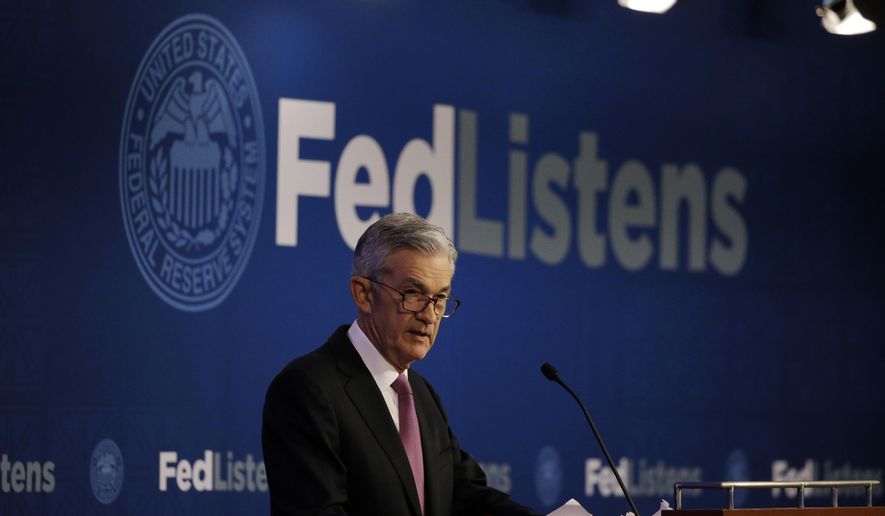The Federal Reserve held interest rates steady Wednesday, setting up another potential clash between Chairman Jerome H. Powell and President Trump, who is pushing for a rate cut.
The central bank’s open market committee voted 9-1 to keep the benchmark interest rate in the range of 2.25% to 2.5%, where it’s been since an increase in December. St. Louis Fed President James Bullard voted to lower the rate, the first dissent since Mr. Powell became chairman in February 2018.
Mr. Powell also pushed back against reports that Mr. Trump might try to demote him, telling reporters, “The law is clear that I have a four-year term, and I fully intend to serve it.”
Mr. Trump has been urging a reduction in interest rates, saying inflation is in check and the economy would grow even faster if rates were lowered.
In a statement, the Fed signaled that it’s prepared to start cutting rates if needed to protect the U.S. economy from trade disputes and other threats.
Fed officials say that uncertainties “have increased” and for that reason, the central bank was prepared to “act as appropriate to sustain the expansion.”
That language echoes comments from Mr. Powell two weeks ago that triggered a huge stock market rally as investors started believing rate cuts are on the way. As expected, the Fed removed a pledge to be “patient” in changing rates.
On Tuesday, stocks rose and bond yields dipped after the central bank issued its statement, likely reflecting expectations of lower rates ahead.
A survey of 17 Fed officials showed that nearly half now expect at least one rate cut this year, with seven projecting two cuts. At the March meeting, no officials had forecast a rate cut.
Many analysts think the central bank will wait until September at the earliest to announce its first drop in its benchmark short-term rate since 2008 and might not cut again in 2019. A few Fed watchers foresee no rate cut at all this year, especially if the United States and China reach a tentative resolution to the trade war.
Economist Stephen Moore, who withdrew from consideration as a presidential nominee to the Fed this spring, criticized the decision not to cut rates.
“The Fed board’s decision to keep the federal funds rate unchanged shows that the board still doesn’t get the extent of the continuing threat of deflation,” Mr. Moore said in a statement. “Prices for commodities — from soybeans to oil — have fallen by roughly 10 percent over the past six months. For the past four months consumer prices have fallen below the Fed’s standard target.”
He added, “There is no threat of inflation anywhere in the economy and to stay on the virtuous Trump path of 3 to 4 percent growth with stable prices, the Fed should be pumping more dollar liquidity into the economy now.”
Mr. Moore is a columnist for The Washington Times.
Also Tuesday, Mario Draghi, head of the European Central Bank, said the ECB was ready to provide further stimulus, including rate cuts, if the eurozone economy doesn’t strengthen soon.
Mr. Draghi’s comments sent the value of the euro tumbling against the dollar, prompting an angry tweet from Mr. Trump accusing the ECB leader of acting to weaken the euro to gain a competitive trade advantage against the United States.
• This article is based in part on wire service reports.
• Dave Boyer can be reached at dboyer@washingtontimes.com.




Please read our comment policy before commenting.